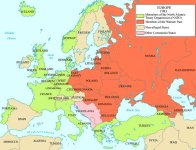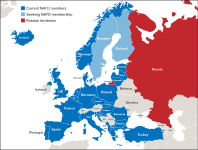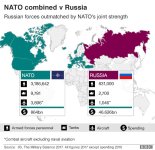Kharkiv was fought with vehicles , but spearheaded by tanks. If they had IFVs they’d have chosen them, they just don’t have enough. This is a critical factor that gets ignored by certain posters here. The Ukrainians are making due, but what they’re using is far from what they actually want to be using.
Kherson was fought with mechnized forces.
Bahkmut has largely been fought by light infantry. In trench lines crossing all sorts of terrain. They don’t hide the trenches, they just choose when the occupy them.
The “end of the tank” and the “dimished tank” is such an incredibly poor take from this conflict it can only be the result of looking for confirmation instead of drawing conclusions from evidence.
I admit to bias.
A couple of points:
"The Ukrainians are making due"
"looking for confirmation instead of drawing conclusions from evidence."
Every war is a matter of making do with what you have.
It is partly the corollary to the Rumsfeld observation that you go to war with the army you have and not the army you want.
It is partly the result of the enemy gets a vote.
They may choose to bypass your strengths and go for your weaknesses. They may develop a successful technique that neutralizes your strengths.
So the question then becomes: Do you give up and quit the field? Or do you do the other thing? And nobody knows what the other thing is until it is tried and found to be successful.
The USMC has it right: Adapt, Improvise and Overcome.
It is true that the Ukrainians don't have as many tanks and IFVs as they want. It is also true that Russians, through bad planning, bad luck or the actions of the Ukrainians, also find themselves short of tanks and IFVs. And both sides are short of shells and the guns to shoot them, missiles and planes, and ships and subs. Ukraine is short of the support it was guaranteed when it handed over its nuclear arsenal to Moscow. Both sides are challenged to Adapt, Improvise and Overcome. Every war ends with the tools available. Often the tools available at the end of the war are not the tools that were available at its start.
I flippantly responded to
@FJAG that anything is possible if cash. - Cicero's sinews.
As in Cicero's day, in the days of Howe and Dundas, in Ukraine and Russia, Canada suffers from a lack of infinite money. So the money available has to be allocated. Bets must be placed. And the wheel spun....
My sense is that the biggest failing of NDHQ is not the inability to lobby effectively to for more money to buy the tools it thinks necessary to fight, it is the inability to successfully manage the funds they have to create an effective fighting force - one which can Adapt, Improvise and Overcome.
War is not about process. War is about outcome. And only winning matters.
FJAG points to Russia's militarized society as a strength in that it replaces cash with people. I am not convinced that a coerced people make for an effective army. Especially one that lacks effective weaponry.
Ukraine had an effective army that had held off the Russians for 8 years but even they had not fully embraced a military society until January of this year.
Canada is not a militarized society. There obviously are elements in society that are in sympathy with need for a military. Some of those are in uniform. Some just want to help anyway they can. Part of the failing, as far as I am concerned is the lack of outreach to those willing helpers and figure out how to best employ them
Strangely enough, me that is no fan of accountants, find myself in sympathy with the accountants. If NDHQ can't manage a budget in peacetime, can't adapt, improvise and overcome in peacetime, to create a useful force for the politicians to employ, then what evidence is there that their skills will magically improve on the day war breaks out?
Is it a matter of hope in NDHQ that they limp along until that day when the taps will open and all their problems will be solved?
One characteristic of that day throughout history is that all the crystal balls are broken. And you live with results of the roulette wheel's spin.
On the subject of confirmation bias.
I search the available evidence. I find evidence that suits my developing hypothesis. It convinces me.
You are free to search the available evidence to find that which suits your hypothesis. No doubt it convinces you. You argue well.
I don't know if I am right or wrong in my beliefs but as of this time I am not convinced of the general utility of a very expensive, heavily armoured force in the Canadian context.
It stops them a lot less than it stops wheeled vehicles.









